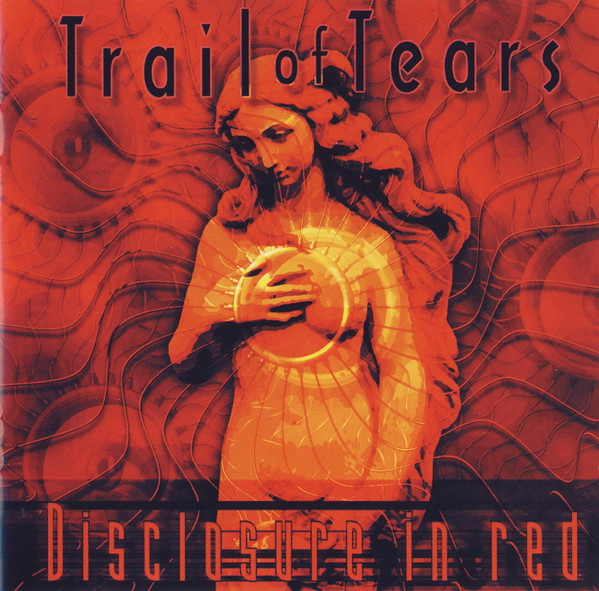Beauty and the Beast by the numbers - 62%
The mid-1990s saw the rise of symphonic gothic metal, with bands like Within Temptation, the Gathering, Theatre of Tragedy, and Tristania leading the way. This genre quickly spread throughout Northern Europe, particularly in countries like Norway and the Netherlands. Drawing inspiration from extreme metal, primarily death-doom, these bands incorporated gothic aesthetics, symphonic arrangements, and the distinctive interplay between male growls and female operatic vocals. Trail of Tears' debut album, Disclosure in Red, encompasses all these elements and serves as an early example of this emerging music genre.
However, even to the untrained ear, it is evident that Disclosure in Red falls considerably behind the output of the aforementioned bands during that period. The hallmarks of the genre are all there, from the classic 'beauty and the beast' vocal style to the interplay between polished symphonic arrangements and moments of pure metallic fury, positioning the album somewhere between the debut albums of Tristania and Within Temptation. The Norwegians even manage to introduce a few unique elements, particularly through a strong melodic death metal influence manifested in the alternating acoustic and electric guitar passages and the unmistakable use of twin guitar harmonies.
The problem lies in the fact that these elements seldom come together to create a satisfying whole. Instead, they exist disjointedly, lacking direction, as if the band did not quite know what to do with their sound. Several pitfalls contribute to this outcome. The album's songwriting quality is mediocre, with the complex, multi-part structures struggling to achieve a smooth flow from peaks to valleys. At times, the arrangements lack sophistication, particularly when multiple instruments play in unison, resulting in a dense, suffocating texture. The band also faces vocal challenges, especially with Helena Michaelsen, who lacks the control and delivery of other operatic singers in the genre. Her rock singing is slightly better, while her recited parts tend to be cringeworthy. Additionally, the vocals suffer from a lack of compelling melodies, with the guitars outshining the singers in delivering melodic hooks. This raises questions about the thought put into constructing the vocal lines. Furthermore, the production quality falls short, with an imbalanced mix (the female vocals and acoustic guitars are too loud) and a murky sound that particularly detracts from the keyboard arrangements.
These drawbacks feel particularly damning when considering the broader context of the symphonic gothic metal scene that was developing during those years. By 1998, Theatre of Tragedy had already released two masterpieces that are still revered as seminal records for the genre (1996's Velvet Darkness They Fear and 1998's Aegis). Even Tristania's debut album from the same year surpasses Disclosure in Red in almost every aspect, including songwriting, arrangements, melodies, and delivery. Despite this tentative debut, Trail of Tears managed to capture the attention of Napalm Records, a label heavily invested in the symphonic gothic metal genre at the time. They signed the Norwegians for their second, and undoubtedly more confident, album, Profoundemonium, released two years later. If you're new to Trail of Tears, it might be a better idea to start with their sophomore album rather than Disclosure in Red.
[Review written for the 11th Diamhea Memorial Review Challenge]

